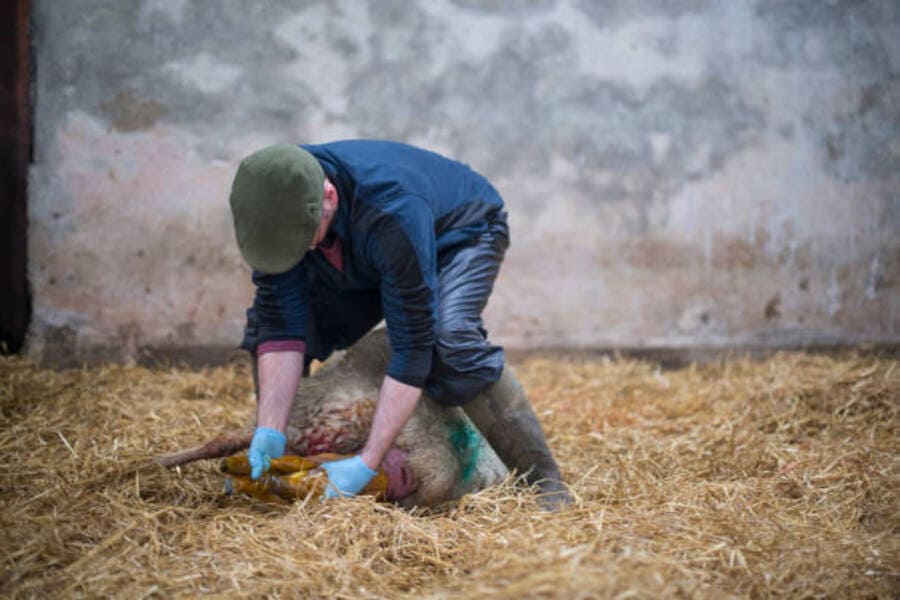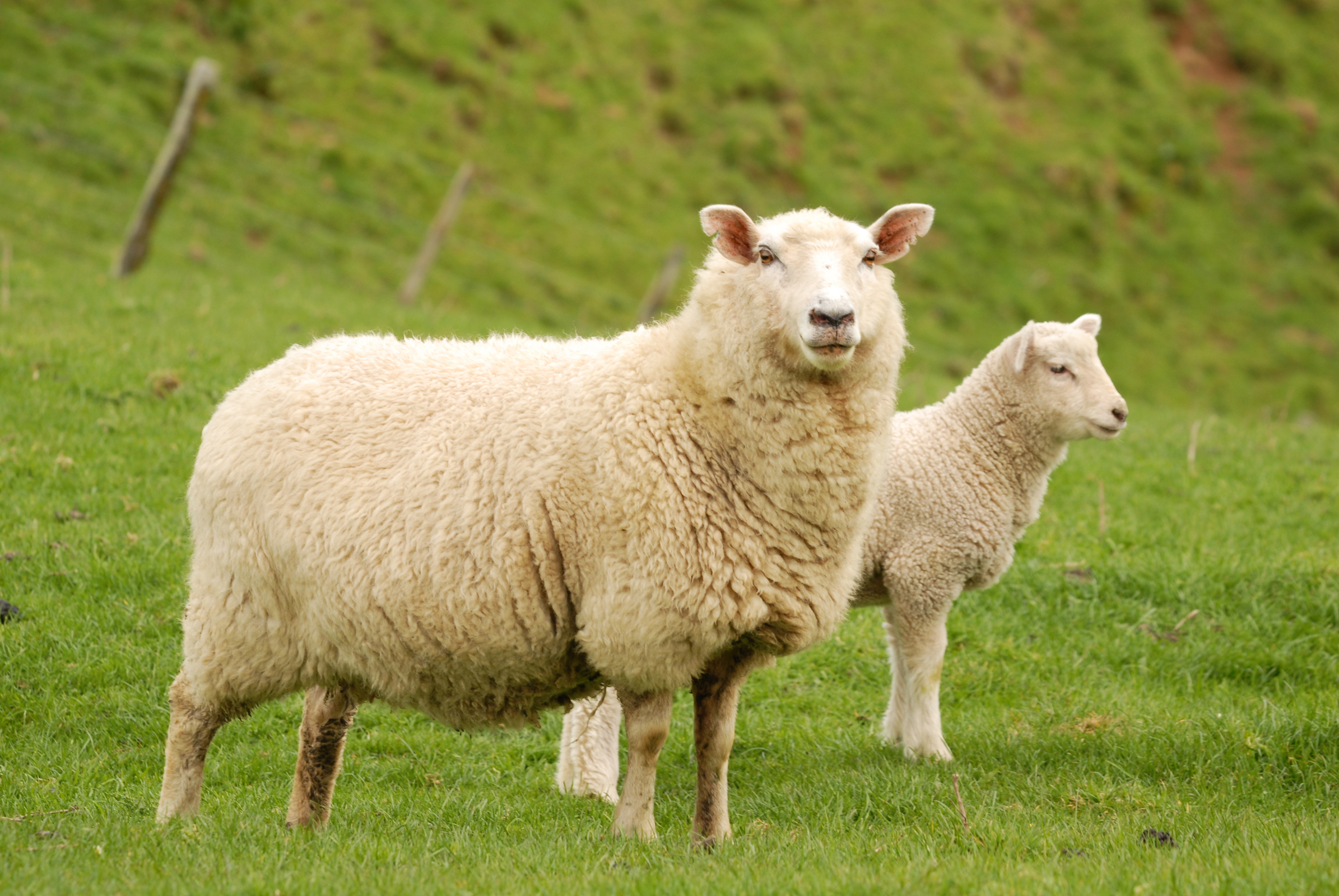Q fever is a disease that affects many animal species. However, it is ruminant animals (cattle, sheep and goats) that most often show clinical signs of the disease, and which constitute a reservoir for the bacteria they shed. They are therefore the source of contamination for other herds, and potentially also for humans.
Q fever in sheep: what are the clinical signs?
As in cattle and goats, the clinical signs of Q fever in sheep are dominated by reproductive disorders, particularly abortions. For example, the French observatory for monitoring ruminant abortions has shown that in 19% of cases, Coxiella burnetii, the bacterium responsible for Q fever, could be considered the etiological agent of the abortions. Q fever is therefore one of the major causes of abortion in sheep.
In addition to abortions, Q fever in sheep is responsible for the birth of weak or stillborn lambs. Although clinical expression is less violent in sheep than in goats, an episode of Q fever in a sheep flock can lead to the loss of 18% of lambs (Eibach et al., 2013). Consequently, in addition to the sanitary problem, Q fever in sheep causes significant economic losses.
Q fever in sheep: epidemiology
Transmission of Q fever in sheep, other animals and even humans is essentially by inhalation. Oral contamination is much less frequent. Transmission by ticks cannot be ruled out, but its importance is negligible compared to the airborne route. Finally, sexual transmission has never been clearly established in sheep, although it has recently been shown (Wolf et al., 2020) that rams can have Coxiella burnetii in their prepuce without having antibodies against the bacterium.

As with other ruminant species, maximum shedding of the bacterium occurs at parturition. Consequently, the placenta, other fetal annexes and associated fluids are very rich in Coxiella burnetii (up to 109 bacteria per gram). In the event of abortion, the fetus is also considered particularly infectious.
Another route of excretion for Coxiella burnetii is via feces. In this way, litter can maintain the disease cycle within a herd. However, fecal excretion in ewes appears to be lower than in goats (Bauer et al., 2020).
Finally, in contrast to cows and goats, ewes shed little or no bacteria in milk.
Q fever in sheep: the control
As with other species, obvious biosecurity measures must be put in place in the event of Q fever infection of a sheep flock. As the bacterium is particularly excreted in large quantities at the time of abortion or birth, fetal annexes, vaginal fluids and any dead fetuses are major sources of contamination for other animals in the flock and the farmer himself. It is therefore necessary to remove these virulent materials and store them in a closed container to avoid contamination of other animals and the environment.
In connection with faecal excretion, the use of manure must be rationalized and its spreading absolutely avoided in windy conditions to prevent the spread of the disease to neighbouring farms and populations.
In addition to these simple biosecurity measures, controlling Q fever in sheep requires medical measures. A phase I inactivated vaccine has been on the market for many years and has proved its efficacy in reducing clinical signs and shedding of the bacterium by animals, even in contaminated environments. Until recently, this vaccine was indicated for goats and cattle, but it is now also approved for sheep. The studies that led to this new claim highlighted its effectiveness in reducing the proportion of animals excreting the bacterium.

In addition, vaccination of ewes was shown to significantly reduce the number of abnormal pregnancies (abortions and stillborn or non-viable lambs) and increase the number of live lambs at birth.
The vaccination protocol consists of two 2-mL subcutaneous primary injections.
Field studies (Bauer et al., 2021) have shown that the vaccine, combined with other biosecurity measures, progressively reduces shedding of Coxiella burnetii by infected animals and the number of infected animals. As a result, contamination of the environment is also reduced, and in the long term (usually 5 to 7 years) the disease is eliminated.
Numerous data also exist on the benefits of animal vaccination for human health. From 2007, but especially between 2008 and 2010, a major outbreak of Q fever occurred in the Netherlands, resulting in numerous human cases requiring almost 800 hospitalizations. Unfortunately, there were also a few deaths. The authorities established that the origin of the epidemic was small ruminants (goats and sheep). Various sanitary measures, including vaccination of sheep and goats, brought the epidemic under control. It was concluded that vaccination had helped reduce the risk to humans (Hogerwerf et al., 2011).
Key points
- Q fever affects sheep, as well as goats and cattle.
- In sheep, the main clinical expression is abortion. However, these are less frequent than in goats.
- Among disease control measures, vaccination is essential to reduce clinical expression, bacterial shedding by infected animals and environmental contamination.
- Vaccination of small ruminants has also proved effective in combating a human epidemic of Q fever.
References
Bauer, B., Prüfer, L., Walter, M., Ganter, I., Frangoulidis, D., Runge, M., & Ganter, M. (2020). Comparison of Coxiella burnetii excretion between sheep and goats naturally infected with one cattle-associated genotype. Pathogens, 9(8), 652.
Bauer, B. U., Knittler, M. R., Pruefer, T. L., Wolf, A., Matthiesen, S., Runge, M., & Ganter, M. (2021). Humoral immune response to Q fever vaccination of three sheep flocks naturally pre-infected with Coxiella burnetii. Vaccine, 39(10), 1499-1507.
Eibach, R., Bothe, F., Runge, M., & Ganter, M. (2013). Long-term monitoring of a Coxiella burnetii-infected sheep flock after vaccination and antibiotic treatment under field conditions. Berliner und Munchener tierarztliche Wochenschrift, 126(1-2), 3-9.
Hogerwerf, L., van den Brom, R., Roest, H. I., Bouma, A., Vellema, P., Pieterse, M., ... & Nielen, M. (2011). Reduction of Coxiella burnetii prevalence by vaccination of goats and sheep, The Netherlands. Emerging infectious diseases, 17(3), 379.
Wolf, A., Prüfer, T. L., Schoneberg, C., Campe, A., Runge, M., Ganter, M., & Bauer, B. U. (2020). Prevalence of Coxiella burnetii in German sheep flocks and evaluation of a novel approach to detect an infection via preputial swabs at herd-level. Epidemiology & Infection, 148.
About the author
Philippe Gisbert (Ruminants Global Technical Manager)
Philippe Gisbert started his career in 1994 as a Vet practitioner working with companion and farm animals for over 9 years. He then became Health Affairs Manager for Group Agena (artificial insemination company). In 2008 he joined Eurofins – Laboratoire Coeur de France as Animal Health Unit Manager where he worked for 7 years until he joined Ceva France as Technical Manager Ruminants (Infectiology, Vaccines and Diagnostic). Since 2020 he is Global Technical Manager for Biologicals, Udder Health and Antiinflammatories. He is a member of SIMV diagnostic and anti-infective technical groups and has integrated different working groups of ANSES and UNCEIA related to epidemiology, antibiotic resistance and reproduction in livestock.
Explore author’s articles

Leave your comments here